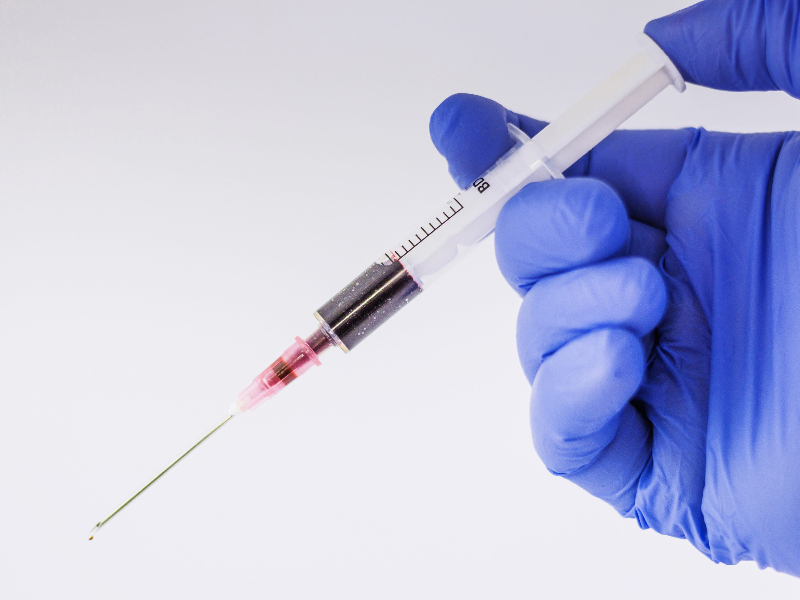From Clinical Accuracy to Cultural Connection: Engage Patients Globally.
Stop losing patients to cultural gaps. Our transcreation ensures your message resonates with every audience.
Transform confusing medical translations into messages that build trust, drive adherence, and achieve true global patient engagement.
A patient must emotionally connect with the message before they comply with treatment. We adapt your materials to speak directly to local values.
Direct translations can unintentionally offend or alienate. We navigate cultural sensitivities around health, weight, and family with intelligence and empathy.
The goal isn’t word-for-word accuracy, but achieving the exact same desired impact and behavioral outcome in a new market.
Beyond Translation: The Role of Transcreation in Life Sciences for Patient Engagement.
Your new therapy is groundbreaking. Your clinical data is robust. But if your patient messaging fails to resonate culturally, its impact will be lost in translation. A direct translation might be linguistically accurate, yet if it feels foreign, confusing, or even insensitive, patient trust and adherence suffer. Transcreation is the necessary solution to this critical problem.
The life sciences industry operates under two imperatives: scientific accuracy and human empathy. The first ensures efficacy and compliance; the second drives patient behavior and adherence. Historically, the focus on language services has skewed heavily toward the former—the precise translation of regulatory documents, protocols, and technical manuals. While our core professional translation services ensure these regulatory documents are flawless, our specialized approach to transcreation in life sciences ensures your patient-facing materials are equally powerful and effective.
This article explores why marketing teams within pharmaceutical, biotech, and medical device companies must evolve their approach from simple translation to sophisticated cultural adaptation medical marketing. We position transcreation not merely as a «creative marketing» expense, but as a mandatory bridge between scientific truth and human understanding. For a patient to comply with treatment or engage with a disease awareness campaign, they must first connect with the message on a cultural and emotional level. This is the path from Clinical Accuracy to Cultural Connection.
The Patient-Connection Gap: Why Accuracy Isn’t Enough.
The modern healthcare landscape is defined by patient-centricity. This shift acknowledges that clinical success relies heavily on patient behavior—the decision to seek care, adhere to medication schedules, or participate in a trial. Nevertheless, the linguistic tools used to communicate with this global audience often fall short.
The Pitfalls of Literal Translation in Healthcare.
A literal translation, by its very nature, prioritizes the transference of meaning, word-for-word or phrase-for-phrase. However, this direct transfer often ignores the intricate cultural context that shapes how people perceive health, illness, and authority.
Consider a drug’s name or slogan. While it may be catchy and engaging in English, a direct translation may inadvertently carry a negative or nonsensical connotation in another language. Furthermore, the implied tone of urgency in a Western health campaign might be perceived as alarmist or rude in cultures that favor deference and subtle communication.
Measuring the Cost of Misconnection.
The failure to achieve cultural connection isn’t just a marketing problem; it has measurable clinical and commercial costs:
- Decreased Patient Adherence: If instructions for medication or lifestyle changes are confusing or culturally uncomfortable, patients are less likely to follow them, thereby compromising the efficacy of the treatment. Again, this failure directly impacts public health outcomes.
- Erosion of Trust: When patient educational materials feel foreign or are insensitive to local beliefs about illness, they fail to build the trust necessary for a positive patient-provider relationship.
- Wasted Marketing Spend: A global campaign, even with significant investment, will achieve drastically reduced ROI if the core message fails to resonate with local populations. The concept of localizing patient outreach is essential to mitigate this waste.
Defining the Solution: Transcreation in Life Sciences.
This is where transcreation in life sciences becomes essential. It is more than just rewriting; it’s a systematic, consultative process of adapting the message, tone, and imagery of patient-centric content to evoke the precise same emotion, intended response, and level of understanding in a new culture. It requires linguistic mastery combined with deep cultural intelligence and an understanding of the specific medical context. In essence, transcreation starts with the effect of the original content and works backward to create culturally appropriate content that achieves that identical effect.
Transcreation vs. Translation: Knowing the Difference is Critical.
For marketing teams developing global patient engagement strategies, understanding the line between simple linguistic transfer and full cultural adaptation is the difference between failure and success. The type of document dictates the service required.
| Feature | Translation (Scientific Accuracy) | Transcreation (Cultural Connection) |
| Primary Goal | Regulatory compliance & precision | Patient engagement & action |
| Focus | Linguistic accuracy and fidelity to the source text | Emotional impact and cultural resonance |
| Typical Content | Protocols, Case Report Forms (CRFs), Summary of Product Characteristics (SmPCs), Clinical Study Reports (CSRs), Regulatory Submissions | Patient brochures, disease awareness websites, campaign slogans, TV scripts, social media copy, mobile app interfaces |
| Metric of Success | Verifiable accuracy and consistency, minimal deviation from source | Effectiveness, resonance, cultural appropriateness, brand alignment |
Exportar a Hojas de cálculo
The Recipe Analogy: Distinguishing Transcreation vs Translation Life Sciences.
A powerful analogy helps crystallize the distinction:
- Translation is about transferring the recipe correctly. When translating a drug’s manufacturing protocol, you need absolute, unyielding accuracy to ensure every step is followed precisely, regardless of the local culture. The goal is regulatory and scientific exactitude.
- Transcreation is about adapting the meal to local tastes so it’s equally appealing. If the core message is «Eat this healthy meal,» simply translating the ingredients might result in a dish that uses unfamiliar or culturally unappealing foods. Instead, transcreation adapts the meal’s ingredients and presentation to local norms—say, swapping a Western vegetable for a local staple—to achieve the same goal of promoting a healthy diet. This ensures the maximum impact and a positive response.
The Critical Role of Cultural Adaptation in Medical Marketing.
Medical marketing operates in a heavily regulated and sensitive space. Therefore, every message must be scientifically sound while navigating local sensitivities around illness, family, and personal responsibility. On the one hand, you need content that passes compliance review; on the other hand, you need content that makes a patient feel seen and understood. Transcreation is the only service that reliably delivers on both fronts, making it a cornerstone of effective medical marketing localization.
The challenge is often in non-verbal communication. Imagery, color, and layout carry different connotations globally. For example, white can signify purity in one culture, but mourning in another. Equally important are the cultural norms surrounding authority figures. An image showing a patient questioning a doctor, which might convey empowerment in one market, could be seen as disrespectful or confrontational in a culture that values deference to medical authority. Transcreation ensures these elements are harmonized with the local audience.
Localizing Patient Outreach Now.

Stop translating slogans; start recreating resonance to drive true global engagement.
A direct campaign often loses its punch in a new market. Our healthcare transcreation services guarantee your call to action hits home locally.
We analyze local psychology to ensure your patient outreach campaign motivates action, whether through individual freedom or family collective well-being.


Download Our Guide to Cultural Adaptation Medical Marketing Message:
Learn the essential steps needed to transform your content from a direct translation into a powerful local engagement tool.
Where Transcreation is Non-Negotiable: Key Use Cases.
For life science marketing teams, knowing exactly when to engage healthcare transcreation services is key to managing budget and maximizing impact. Below are concrete examples where cultural adaptation is vital for success.
Localizing Patient Outreach Campaigns.
A core task for marketing teams is converting scientific potential into patient action. This often starts with a campaign slogan designed to motivate.
- Example 1: Individualism vs. Collectivism: Consider a pharmaceutical campaign focused on a chronic condition with the primary slogan, «Take Back Your Life.» This phrase is highly effective in individualistic Western societies. However, in cultures that place a higher value on collective well-being and family unity, an emphasis on individual freedom might be inappropriate or even confusing. The transcreated slogan could become «Regain Your Place with Family» or «Stay Strong for Those You Love.» This shift adapts the message to align with cultural motivators, ensuring the patient is empowered within their societal framework, not against it. This is a perfect example of effective localizing patient outreach.
- Example 2: Directness vs. Subtlety: A disease awareness ad in the US might use bold, direct language and imagery of suffering to provoke action. In certain Asian markets, this level of directness can be seen as aggressive or disrespectful. In contrast, the transcreated content would use more subtle, evocative language, focusing on the slow, positive change that treatment offers, using metaphors of balance or harmony.
Disease Awareness Content and Patient-Centric Content Translation.
Explaining complex conditions in lay terms is difficult enough; doing so cross-culturally requires an additional layer of expertise.
- Culturally-Specific Metaphors: How a disease is described must resonate locally. For instance, explaining the concept of an autoimmune disorder might be handled differently. In some cultures, metaphors related to mechanical failure might work; conversely, in others, a description rooted in the concept of internal «imbalance» or «energy flow» might be more immediately understandable and acceptable. Transcreation specialists are writer-linguists who are deeply familiar with these local cognitive models.
- Taboos and Sensitivity: Adapting patient materials for different cultures means navigating local sensitivities. As noted in the instructions, consider a campaign for a diabetes drug in a culture where discussing weight or dietary restrictions is taboo. A direct translation of a campaign focused on «losing weight for health» or «cutting out sugar» might fail. Instead, the transcreation would focus on «managing energy levels» or «improving overall wellness,» aligning with cultural norms to achieve the same goal. This is how you improve patient adherence through communication.
To be effective, healthcare transcreation services must be more than just a creative exercise; they must be a structured, rigorous methodology. Life science marketing teams need a partner that can marry the fluidity of creative writing with the strict precision of medical compliance. Our methodology is designed to ensure cultural authenticity without sacrificing scientific accuracy.
Our Methodology for Culturally-Relevant Healthcare Transcreation.
The process follows a logical sequence, ensuring every piece of content is thoroughly researched, expertly adapted, and fully vetted. First and foremost, we treat transcreation as a collaborative project, not a one-way translation task.
Phase 1: Briefing & Collaborative Discovery.
The project begins with a deep dive into the source material and the client’s strategic goals. This stage is crucial for framing the entire project.
- Understanding the Core Message: We work with your marketing team to understand the fundamental, non-negotiable message—the scientific truth you need to convey. Next, we identify the desired action or emotional outcome. Is the goal trust, urgency, hope, or compliance?
- Target Audience Profiling: We go beyond simple demographics. We analyze the specific socio-cultural values, beliefs about the particular disease, media consumption habits, and attitudes towards healthcare providers in the target market. Furthermore, we identify any potential taboos related to imagery, color, or specific concepts.
- Establishing the Creative Mandate: A clear creative brief is developed. This brief outlines the tone (e.g., authoritative but warm, simple but sophisticated), the required cultural adaptation level, and the specific limitations (e.g., compliance constraints, approved terminology).
Phase 2: Transcreation by In-Country Writer-Linguists.
This phase is the core of the service, where the magic happens. We do not use conventional translators. We use writer-linguists who are:
- Native Speakers and Cultural Insiders: They live in the target market, consuming local media and fully understanding the cultural pulse.
- Marketing and Subject Matter Experts: They possess creative copywriting skills and deep familiarity with the life sciences, medical terminology, and local regulatory frameworks for communication.
Instead of translating, they recreate the content, often writing completely new copy, taglines, and even website navigation paths. This ensures the message feels like it was originally created for that specific local market, thereby maximizing resonance and driving effective cross-cultural healthcare marketing. This meticulous process is what sets our life science translation services apart, offering a full spectrum from technical documentation to empathetic patient communication.
Phase 3: Sensitivity and Compliance Review.
Creativity must always be balanced with compliance and safety, especially when multilingual patient communication is involved.
- Medical Accuracy Check: The adapted message is rigorously reviewed by a separate linguistic and subject matter expert team to ensure that the creative interpretation has not compromised any medical facts or regulatory requirements.
- Cultural Sensitivity Vetting: A final review is conducted to ensure the message is respectful, appropriate, and aligned with the local culture, successfully avoiding any potential misinterpretation that could damage the brand or the patient relationship. Finally, this step ensures that the content is not only impactful but also adheres to the highest ethical and professional standards, helping to build patient trust globally.
Case Studies: Localizing Patient Outreach in Practice.
Seeing transcreation in action demonstrates its necessity. Here are detailed examples, expanding on the concepts of navigating taboos, cultural norms, and the importance of imagery.
Case Study A: Navigating Taboo Subjects (The Diabetes Campaign).
- The Problem: A major pharmaceutical company launched a global patient education campaign for a new diabetes drug. In the source market, the campaign focused heavily on weight loss, dietary control, and the idea of «personal responsibility» in managing the disease. When translated directly into several Asian markets, the campaign was met with low engagement. Why? In these cultures, discussing weight is often viewed as taboo, impolite, or highly personal and inappropriate for public discourse. In addition, the concept of strictly «controlling» food can clash with traditional cultural values centered on shared meals and hospitality.
- The Transcreation Solution: Our team shifted the focus entirely. The campaign was not about «losing weight,» but about «sustaining energy for daily worship and family life.» The imagery changed from showing solitary exercise to showing multi-generational families enjoying time together. The key message, «improving overall wellness,» was used as a culturally aligned euphemism that achieved the same clinical goal (encouraging better health habits) without the cultural offense. This demonstrates how localizing patient outreach transforms clinical information into usable, culturally accepted advice.
Case Study B: Adapting Imagery for Trust (A Respiratory Device Campaign).
- The Problem: A campaign for a new respiratory device featured high-quality photography of a young, confident patient independently using the device at home, with the slogan: «Self-Management is Freedom.» In the target Middle Eastern market, the image was seen as confusing. Traditional, highly collectivist cultures expect illness to be managed within the family unit or by the medical provider. Showing a young person independently managing a device implied a lack of family support, which could be perceived negatively. The idea of «freedom» through self-management was also less motivating than the idea of «relief» or «stability.»
- The Transcreation Solution: The images were adapted to show the patient using the device in the presence of a supportive family member (a mother or spouse), conveying a sense of communal care and stability. The slogan was transcreated to focus on «Restored Comfort and Peace for the Family,» which resonated far more powerfully as the primary motivator for treatment adherence. This subtle change in visual context significantly improved engagement and trust, successfully building patient trust globally.
Case Study C: The Perils of Tone in Public Health Messaging.
- The Problem: A public health campaign aimed at increasing vaccine uptake used a highly directive and authoritative tone, stating, «Get Vaccinated Now—It Is Your Duty.» This tone, while common in some European public health messages, caused a significant backlash in a different market where the public is historically wary of governmental authority. Consequently, the directive tone was perceived as coercive, leading to resistance instead of compliance.
- The Transcreation Solution: The message was entirely re-written to employ an empathetic, educational, and collaborative tone, using a structure like: «Protect Your Community: Information to Help You Decide.» The focus shifted from a command («It Is Your Duty») to an act of thoughtful, informed community care («A Choice for Collective Health»). The transcreation team focused on the ultimate benefit to the patient’s social unit, successfully enabling multilingual patient communication that was persuasive, not confrontational.
Add a compelling title for your section to engage your audience.



Use this paragraph section to get your website visitors to know you. Consider writing about you or your organization, the products or services you offer, or why you exist. Keep a consistent communication style.

Strategic Integration: Beyond the Words.
The power of transcreation lies in its holistic approach. It is not just about translating text; it is about localizing the entire experience, which extends into the digital realm where your patients first encounter your brand.
The Importance of Localizing Disease Awareness Campaigns.
Digital disease awareness campaigns are often the first touchpoint for patients. The goal here is to inform, destigmatize, and guide users toward resources. This requires more than simple translation of the website copy.
- Search Behavior: Keywords for healthcare are often searched differently across cultures. A US search might be «treatment for condition X,» whereas a search in another culture might be a description of symptoms or an appeal to traditional medicine alongside modern solutions. Transcreation accounts for this by optimizing content to match natural local search queries, making patient-centric content translation effective for SEO.
- Information Hierarchy: The preferred method of consuming complex health information differs. Some cultures prefer direct Q&A formats; conversely, others prefer narratives and testimonials. The transcreation process adjusts the information architecture and layout to match the local preference for consuming serious content.
Ensuring Cultural Sensitivity in Healthcare Communication.
The principle of cultural sensitivity in healthcare communication is the ethical imperative underpinning transcreation. It ensures that the adaptation process is guided by respect for local customs, religious beliefs, and social hierarchies. For example, references to specific body parts or medical procedures that are casually discussed in one market may be considered taboo in others. The transcreation team must be trained to proactively flag and adapt such content. This due diligence protects the brand’s reputation and ensures the patient feels respected, not violated, by the information they receive.
While transcreation often involves a higher initial investment than simple translation, the Return on Investment (ROI) is dramatically greater for patient-facing content. In a highly competitive global market, effective communication is a critical differentiator that impacts adherence, market penetration, and brand loyalty. This empathetic approach is what defines our full suite of life science translation services, ensuring both compliance and connection.
Quantifying the Value of Effective Cross-Cultural Healthcare Marketing.
The benefits of utilizing dedicated healthcare transcreation services can be measured across several key business metrics:
- Increased Patient Adherence (Clinical Outcome): As previously discussed, clearer, more resonant instructions lead to better patient compliance. Better adherence translates directly into superior clinical trial outcomes and, subsequently, higher rates of therapy success in the commercial market. This is the ultimate goal of improve patient adherence through communication.
- Reduced Patient Drop-Off (Operational Efficiency): Confusing consent forms, hard-to-navigate patient portals, or culturally awkward recruitment materials can all cause patients to disengage from a trial or a therapy. Transcreation mitigates this risk by ensuring all touchpoints are smooth and culturally comfortable.
- Enhanced Brand Equity (Market Share): Brands that consistently communicate with empathy and cultural intelligence are perceived as more trustworthy. This stronger brand affinity directly contributes to long-term market leadership and makes recruiting and retaining patients easier. By demonstrating a genuine commitment to understanding the patient, you actively build patient trust globally.
Beyond Patient Materials: Transcreation in Recruitment and Retention.
The need for transcreation extends beyond marketing brochures and disease awareness websites. It is a vital tool in global clinical trial management.
- Recruitment Advertising: Trial recruitment advertisements must be adapted for local media and cultural sensibilities to attract the right demographic quickly. Slogans and imagery that work in one market (e.g., emphasizing cutting-edge science) may fail in another (e.g., where patients prefer an emphasis on safety and established efficacy).
- Informed Consent Forms (ICF): While the core legal and ethical obligations must be translated with absolute accuracy, the patient-facing language used in the ICF is often best handled by transcreation. The goal is to ensure the complex legal language is rendered in simple, empowering, and culturally sensitive terms so that the patient truly understands what they are consenting to. This supports the ethical principle of truly informed consent globally. Again, this marriage of precision and empathy is a hallmark of our service.
Deep Dive into Cultural Adaptation: The Nuances That Matter.
To illustrate the technical depth of cultural adaptation medical marketing, we must examine the specific linguistic and visual elements our writer-linguists analyze during the transcreation process. These seemingly small details have massive consequences for the perception of your brand and content.
The Linguistics of Authority and Modality.
Different languages have different ways of expressing authority, urgency, and obligation.
- Imperative vs. Collaborative Language: English-language healthcare communication often uses direct imperative verbs (e.g., «Ask your doctor,» «Take this immediately»). In many cultures, direct commands are considered confrontational, particularly in a doctor-patient dynamic. Instead, transcreation employs collaborative language (e.g., «It is recommended that you speak to your doctor,» or «You may wish to consider taking this medication as directed») to maintain respect for the patient and the care provider, ensuring the patient feels like a partner in their care.
- The Use of ‘You’ (Second Person Pronouns): The way a text addresses the reader can be highly problematic. In languages with formal and informal ‘you’ (like Spanish, French, German), selecting the wrong form instantly creates awkwardness or offense. Furthermore, the formal ‘you’ may be appropriate for initial patient education, while the informal ‘you’ may be appropriate for an app tracking daily medication. Transcreation teams ensure consistency and cultural appropriateness in this micro-level communication.
Color, Symbolism, and Imagery.
Visual communication is often the fastest, and thus most potent, way to convey a message.
- The Power of Color: As mentioned, white can represent purity or mourning. Red can symbolize love and health in some cultures, but danger and warning in others. Consequently, a packaging design or website banner must be adapted to align with local psychological and cultural associations with color.
- Hand Gestures and Body Language: Simple stock photography of a hand gesture (e.g., a thumbs-up) can be offensive or even obscene in specific regions. Likewise, images showing too much physical proximity between unrelated individuals, or showing women in professional settings without specific cultural attire, may undermine the brand’s message. Transcreation briefs include detailed guidance on culturally appropriate visual elements.
Dates, Times, and Measurement Systems.
While seemingly basic, inconsistent localization of numerical data can erode trust and cause clinical confusion.
- Measurement Systems: Dosage instructions must be localized to the correct metric system (e.g., Imperial vs. Metric). In addition, caloric counts, temperature (Celsius vs. Fahrenheit), and even medication sizes (e.g., US fluid ounces vs. metric milliliters) must be flawlessly presented.
- Date Formats: Mixing up month/day/year formats (e.g., 05/06/2024 could be May 6th or June 5th) is a common error that can lead to critical mistakes in appointment setting or medication scheduling. Transcreation ensures all numerical information is presented in the locally preferred format, maintaining the regulatory precision handled by our core professional translation services.
The Partnership: Why Expertise in Transcreation Life Sciences Matters.
The complexity of the life sciences demands a specialized language partner. A general marketing translation agency cannot successfully navigate the dual demands of medical compliance and cultural empathy. Our expertise is rooted in a deep understanding of the industry’s specific challenges and regulatory frameworks.
Regulatory Awareness and Creative Freedom.
Our writer-linguists are trained to understand the boundaries set by global regulatory bodies (FDA, EMA, PMDA, etc.). The adaptation process is never unbounded creativity; it is creativity within compliance.
- Claims Management: Transcreation teams are meticulous in ensuring that the adapted copy does not introduce any non-approved or unsubstantiated claims. Instead, they find culturally impactful ways to deliver the approved claim while maintaining full regulatory integrity.
- Review Cycle Efficiency: By having medically-aware and culturally-sensitive experts on the team from the start, we significantly reduce the time spent in local legal and regulatory review cycles. Content is often approved faster because it meets both the clinical truth requirement and the cultural sensitivity requirement on the first attempt.
Transcreation as a Component of Global Content Strategy.
For life science organizations pursuing global content strategies, transcreation is the final, essential step. First, the core concept is developed (the what). Then, technical materials are accurately translated (the how and why for regulators). Finally, transcreation adapts the patient-facing materials (the feeling and connection). This integrated workflow ensures a unified global brand message that is simultaneously scientifically consistent and locally resonant across all markets. This is the pinnacle of effective cross-cultural healthcare marketing.
While transcreation is fundamentally a human, creative, and intellectual process, technology plays a critical supporting role. It provides the necessary infrastructure for consistency, speed, and quality control, enabling our transcreation life sciences team to focus purely on the creative and cultural nuances.
Consistency Through Transcreation Memory (TM) and Style Guides.
The creative process of transcreation must not lead to brand inconsistency. Technology helps manage this delicate balance.
- Transcreation Memory (TM): Unlike standard Translation Memory (which stores exact sentence matches), our Transcreation Memory stores messages and concepts. When a core message, slogan, or tone is successfully adapted for one market, the Transcreation Memory captures the creative solution and its rationale. Thus, when a similar concept or campaign arises for a new market, the writer-linguist has a library of successful strategies and approved tone variations to draw upon, ensuring maximum brand cohesion across all territories.
- Global Style Guides: We maintain dynamic, language-specific style guides that go beyond grammar and terminology. They include approved lists of metaphors, forbidden imagery, preferred levels of formality (e.g., use of the ‘tu’ or ‘vous’), and rules for addressing patients. This systematized cultural intelligence is essential for building patient trust globally.
We Speak the Language of Life Science Marketing.
We understand your compliance needs and your conversion goals better than anyone.


Stop Wasting Budget on Ineffective Global Campaigns.
Terminology Management for Accuracy.
Furthermore, transcreation must remain anchored to medical facts. Terminology Management Systems (TMS) are indispensable for this purpose.
- Ensuring Clinical Precision: While the packaging of the message is creative, the underlying terms for a drug name, active ingredient, or medical condition must be consistent with the approved regulatory translations. The TMS ensures that writer-linguists instantly access the pre-approved, legally required terms for technical content, preventing creative license from compromising clinical accuracy. This crucial function ensures that patient-centric content translation is both creative and compliant.
- Linking to Technical Services: This systematic approach is woven into our larger language ecosystem. The terminology precision for transcreated content relies directly on the technical accuracy established by our core professional translation services, demonstrating the synergy between our regulatory and creative offerings.
The Future of Patient-Centricity: Transcreation in Emerging Formats.
The media landscape for patient communication is evolving rapidly. Consequently, the demands on cultural adaptation medical marketing are becoming more complex, moving from print and static web pages into interactive, auditory, and visual formats. Transcreation is already essential for these emerging channels.
Voice and Chatbot Localization.
With the rise of voice assistants and healthcare chatbots for patient support and symptom checking, the language used must be immediate, natural, and culturally polite.
- Tone of Voice (ToV): The ‘persona’ of the chatbot must be transcreated. In some cultures, a highly authoritative, doctor-like voice may be expected; conversely, in others, a warm, familial, or even peer-like voice is preferred for health advice. Transcreation guides the dialogue trees to ensure culturally appropriate conversational flow and etiquette.
- Addressing Illness: When an AI tool discusses a potentially serious health issue, the language must be sensitively adapted. The words used to express sympathy, urgency, or hope must align with local cultural norms to prevent the patient from feeling alarmed or dismissed.
Video and Multilingual Patient Communication.
Video content, including animations for mechanism of action (MOA) or patient testimonials, requires a multi-layered transcreation approach.
- Lip-Sync Adaptation (Dubbing): When dubbing a video, the script must be adapted not just for meaning, but for cadence, rhythm, and the precise timing necessary to match the speaker’s mouth movements. Again, this is a creative art form where simple translation fails.
- Graphic and Textual Elements: All on-screen text, infographics, and lower-thirds must be adapted and redesigned to ensure the typeface, color, and layout are culturally appropriate and legible. The font used for scientific facts in a German video, for example, may need to be different from the one used in an Arabic video to convey the same sense of trustworthiness.
Risk Mitigation: How Transcreation Protects Your Brand.
In the sensitive field of life sciences, reputation is paramount. A single, globally broadcast cultural misstep can lead to significant media backlash, legal complications, and irreversible damage to brand loyalty. Therefore, transcreation acts as a vital risk mitigation tool.
Avoiding Cultural Faux Pas and Ethical Breaches.
The most damaging risks often stem from unintentional offense, not deliberate malice.
- Religious and Political Sensitivity: Healthcare campaigns can inadvertently touch upon religious or political fault lines. For instance, using certain symbols, colors, or narratives can carry unexpected political weight in regions with long-standing conflicts. Our team of cultural insiders is trained to flag and avoid these sensitive areas, protecting the brand from being drawn into local controversies.
- Stigma and Shame: Illness, particularly mental health issues or conditions related to sexual health, carries intense social stigma in many parts of the world. A transcreated campaign aims to use language that reduces or neutralizes this shame, making it easier for patients to seek help. A direct, non-adapted campaign, on the other hand, can exacerbate the shame and lead to patients hiding their condition. This is the central function of cultural adaptation medical marketing.
Legal and Local Compliance.
Beyond the high-level risks, transcreation helps manage local advertising and communication regulations. Many countries have strict rules about what can be advertised to the public, particularly concerning prescription drugs. Consequently, while the core claims remain consistent, the presentation and promotional tone must be locally compliant. The transcreation process ensures that the adapted materials meet both the global scientific standard and the local legal standard. This makes effective cross-cultural healthcare marketing safe, responsible, and compliant.
For marketing teams, success must be measurable. While the qualitative impact of transcreation (empathy, connection) is clear, it is essential to establish quantitative metrics that prove the value of healthcare transcreation services and justify the investment.
Key Performance Indicators (KPIs) for Transcreated Content.
Unlike technical translation, which is measured by linguistic accuracy, transcreation is measured by behavioral outcomes.
- Conversion Rate: The most direct measure is the increase in the desired action. For a disease awareness website, this might be the click-through rate to «Find a Doctor» or the completion rate for a symptom checker. A successful transcreated page will always outperform a simple translated page in converting local users.
- Time on Page & Bounce Rate: If the content is culturally resonant and engaging, users will spend more time consuming it and be less likely to immediately «bounce» back to the search results. Low bounce rates and high time-on-page metrics are powerful indicators of content resonance and cultural fit.
- Search Engine Visibility (SEO): As this article is itself proof, successful transcreation directly impacts SEO. By adapting content to match local, naturally searched phrases (localizing patient outreach), and by targeting specific, high-intent keywords (transcreation life sciences), the content achieves higher rankings, increasing organic traffic to the relevant campaign pages.
The Long-Term Metric: Patient Adherence and Loyalty.
The ultimate KPI for the life sciences is successful treatment. The investment in culturally intelligent communication pays dividends over the entire patient lifecycle. When communication is clear, trustworthy, and empathetic from the first touchpoint, patients are more likely to:
- Start therapy.
- Adhere to dosing and lifestyle instructions.
- Remain on therapy long-term.
- Become advocates for the brand or treatment.
Ultimately, this focus on authentic connection is what transforms a scientifically accurate drug into a globally successful therapy.
The Role of Life Science Translation Services in a Global Ecosystem.
The discussion of transcreation should be viewed as one facet of a comprehensive global language strategy. The successful life science company needs a full suite of services that handles regulatory exactitude, technical detail, and human empathy. This is why having a single, specialized partner is essential.
Synergy Between Technical and Creative Services.
Our full-spectrum approach ensures that there is a continuous, integrated workflow between all your content needs.
- Technical Foundation: The core technical documents (e.g., Clinical Trial Protocols, manufacturing inserts) are flawlessly handled by our professional translation services team, establishing the accurate and compliant source material.
- Patient Extension: The creative and marketing teams then take this approved scientific truth and utilize our healthcare transcreation services to transform it into emotionally resonant patient outreach.
- Consistent Oversight: This integrated model ensures that the technical terminology used in regulatory submissions always aligns perfectly with the terms used to communicate with patients, avoiding confusing or contradictory messaging across different document types.
This is the power of a dedicated partnership, which goes far beyond simple word-for-word translation.
The Call to Excellence.
In an era of patient-centric content translation, aiming for mere accuracy is a missed opportunity. The goal must be connection. Transcreation ensures your scientific innovation—the result of billions of dollars and years of research—is matched by your communicative empathy, maximizing both humanitarian impact and commercial success.
To learn more about how to elevate your global patient outreach and ensure your message achieves true cultural adaptation medical marketing, explore all of our life science translation services, including specialized healthcare transcreation services. For more information on how we handle the highly technical documents, visit our professional translation services pillar page. You can also explore specific areas like clinical trial translation, medical device translation, and Biotechnology Translation Services.
This comprehensive, empathetic approach is what truly defines excellence in global life science translation services.
Scientific Truth Requires Cultural Adaptation to Drive Patient Action.
We are the necessary bridge between regulatory precision and the patient’s lived experience.
Transcreation ensures that the scientific core of your message is delivered in language and tone that encourages trust and adherence.
Questions on Healthcare Transcreation Services?
Find fast answers to the most common questions our marketing partners ask us about cultural adaptation and compliance below.
Ready to Bridge the Patient-Connection Gap with Expert Transcreation?
Contact our specialized Life Sciences team today to discuss how we can transform your global patient outreach and drive stronger adherence.






